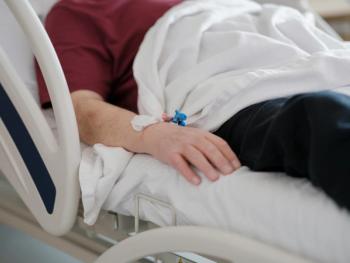A recent incidence of hand, foot, and mouth disease (HFMD) in American baseball players have catapulted the condition—typically rare among adults—into mainstream consciousness. The disease, marked by lesions on the hands and feet as well as around the mouth, is usually non-fatal and dissipates within a week. While communicable HFMD is more prevalent in children, there has been an increase in individuals of all ages, making awareness regarding recognition, diagnosing, and treatment imperative for ensuring appropriate care in a population that’s rarely treated for the condition.
Adult HFMD: Etiology and Diagnosis
The coxsackievirus of the Enterovirus family is the main causative component of HFMD, with Coxsackievirus A16 and enterovirus A71 being the main serotypes associated with the disease. Outbreaks usually occur in daycares, summer camps, and within family units, and summer and early autumn tend to be the times of the year when these outbreaks occur. Family members, regardless of age, are at a higher risk of developing HFMD if they are constant close contact with affected children, as the disease sheds in the stool for several weeks. One study demonstrated that sharing mobile devices can also increase the likelihood of adults contracting the HFMD virus.
Diagnosis of HFMD can often be made by analyzing stool samples or by taking swab samples of the oropharynx for the virus. Typically, the virus that causes HFMD features an incubation period of 4 to 6 days, which is quickly followed by symptoms such as a sore throat with vesicles, fever, malaise, and hand vesicles. During the first week, patients are most contagious; however, many patients remain infectious for 4 to 8 weeks following symptom onset due to residual stool shedding. Although complications (eg, viral meningitis and encephalitis) associated with the disease are not common, temporary fingernail and toenail loss sometimes occurs. Nails will grow back within a few weeks after the disease has run its course.
Treatment for Adult HFMD
While symptoms of HFMD are uncomfortable and can result in missed days of work and limitations in social interaction, the disease is generally mild and resolves within 7 to 10 days. In children and adults, there is no known effective treatment for HFMD. Supportive treatment or general management of symptoms is the main management approach for the condition. Acetaminophen and nonsteroidal anti-inflammatory drugs can be incorporated into supportive care for managing pain and fever. A liquid mixture of a combination of ibuprofen and diphenhydramine can also be used to manage ulcer pain in the throat by routine gargling.
Additionally, some off-label medications, including amantadine, ribavirin, and quinacrine, have been cited as useful adjunctive treatments for severe HFMD caused by enterovirus 71. Mechanical ventilation may also be necessary in some severe cases of adult HFMD. Investigators have focused efforts on developing specific treatments for HFMD caused by enterovirus 71 due to its impact on neurological function; however, no treatment has been approved for use. Receptor antagonists, translation inhibitors, molecular decoys, and replication inhibitors represent novel treatment options that may hold potential for future HFMD treatment. In addition, research is currently assessing the value of pleconaril for the treatment of enterovirus 71-induced HFMD.
The Take Home
Due to the high prevalence of HFMD in infants and children, many clinicians are well-versed in managing the disease in the pediatric population. However, with more adults being affected by HFMD, many clinicians may not be fully aware of how to identify and/or manage these patients due to the lack of information regarding adult approaches. Fortunately, many of the diagnosis and treatment strategies for pediatric HFMD generalize to adult patients. Symptom management may be the most optimal treatment strategy, particularly in the majority of mild HFMD cases, to help manage ulcer pain and fever. Further research is necessary, however, to develop therapies for adults with severe HFMD.




